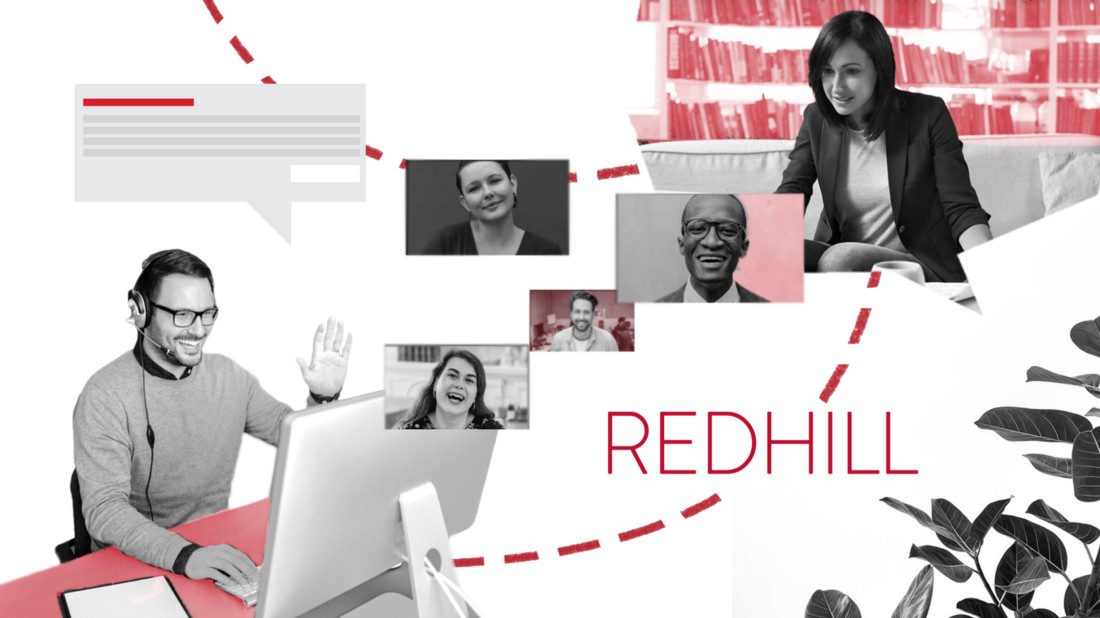
Our story of working with the new normal
We stepped up our ‘people-first’ game to leave no man or woman behind.
The coronavirus had been on our collective radar since we first heard the stories coming out of Wuhan. We watched closely as it began to spread, unsure of what the future would bring.
Then the number of confirmed cases skyrocketed — seemingly overnight — into the thousands in Italy, Iran and South Korea.
Words like ‘social distancing’ and ‘contact tracing’ suddenly became commonplace in everyday conversations; face masks, in some countries, were the new must-have accessory. People ventured out less and stayed at home more. Anxiety was simmering beneath the surface, covered up by a facade of calm.
As the spread and daily number of cases continued to rise, so too did the number of countries under some form of movement restrictions. Companies that could support remote work found themselves having to transition quickly to a completely new normal, to varying degrees of success.
We at REDHILL had anticipated this seismic shift and prepared a plan that would allow us to protect and support our REDHILL family while doing our best to continue business as usual.
Preparing for WFH
Remote working was not new to REDHILL. We’ve always believed flexibility and efficiency is key to getting the best results, so our employees are allocated WFH days if they need them. And long-distance collaboration was already common between our international offices — made possible via tools such as Slack and Google’s G Suite.
Our initial plan was to initiate a “split-team” arrangement to keep the number of people in our offices to a minimum. Employees signed up for days/times in advance to avoid any scheduling issues. This plan was short-lived, however.
Malaysia was the first of our markets to implement severe movement restrictions, doing so on March 18th. We immediately shifted to a WFH arrangement there. We also knew that our other markets would quickly follow suit, so we encouraged our employees to WFH before restrictions took effect.
Sure enough, Sri Lanka imposed a nationwide curfew on March 20th, Germany and Thailand implemented movement restrictions on March 23rd, and Singapore initiated a “circuit breaker” on April 6th. In each market, our employees were prepared in advance for what has now become reality.
Coping with physical distancing
Despite our prior remote work experience, widespread movement restrictions and working full-time from home have still presented difficulties for our staff on both a personal and professional level.
As a company, we made it a core focus to facilitate the transition to remote work and alleviate the stress associated with movement restrictions and subsequent extensions. We employed several initiatives, including:
Workflow optimization
We know that WFH is difficult enough without inefficient processes causing further frustration. Therefore, we have streamlined our workflows to maximise efficiency and adapted our processes for a remote workforce. We increased our use of digital tools such as Google Forms, and introduced new platforms such as DocuSign. We re-evaluate these workflows and processes frequently and encourage feedback from our employees.
Helpful WFH tips
Within a week of the implementation of movement restrictions, our HR team had issued an internal memo to all REDHILL employees with tips and tricks on how to stay productive while WFH. Some of the suggestions included sticking to regular routines for work and sleep, using the extra time to indulge in activities like reading and meditating, turning the laptop camera on for calls, and encouraging employees to stay in close communication with one another.
Daily virtual meetings
To address the lack of face-to-face interactions and increase in distractions, our Business Unit Heads (BUHs) hold virtual morning meetings with their teams every day. Like conventional scrum meetings, these catch-ups are only 15 minutes long and allow teams to keep each other updated on any work or personal issues. They also provide a good excuse to socialize with colleagues and see familiar faces, especially for those who have been WFH for a long time. BUHs also hold training sessions to continue the knowledge transfer that existed prior.
Mental health as a priority
At the time of writing, some of our colleagues have been WFH for more than a month and a half. Many have reported struggles with stress and anxiety from a lack of social interaction, separation from loved ones, reduced physical activity, and a drop in motivation. Our BUHs have encouraged their team members to speak up about any issues they are facing in one-on-one or group sessions. Recently, we held a session for our employees in Singapore to share their frustrations and coping mechanisms, and we will soon do the same for our other employees around the world. It is important to us that our employees know that they are not alone and that we are ready to support them if they need it.
Increased employee engagement
To strengthen relationships, boost morale and reduce feelings of isolation, our teams have tried various forms of virtual engagement to create new shared experiences to bond over. We have had a Dalgona coffee challenge, done online puzzles together, rocked out in jam sessions, shared pictures of our culinary masterpieces, and organized after-work hangout sessions to catch up. These interactions are a nice reminder that there is so much more to our employees than just their jobs.
Customized work backgrounds for video conferencing
Separating professional and personal environments can be a challenge when conducting video calls. Luckily, Zoom allows users to set custom virtual backgrounds, and our designers were very quick to come up with a REDHILL-themed background. Not only does it help our employees maintain a professional image, it also protects them from whatever might be happening behind them.
Regular routines
We continue to observe our regular working hours and protocols to help employees maintain a sense of routine. Our virtual morning meetings are held at the same time every day and end as scheduled, lunch hours are respected, and staff are not required to work or answer work communications after closing hours.
The new normal?
Coronavirus has prompted the largest remote work experiment we have ever seen. As people and companies continue to adapt to this new reality, questions are being raised over what work will look like in a post-coronavirus world.
The headaches faced by businesses unable to operate during the pandemic suggest that things will not just go back to what they were before. WFH may very well be part of the ‘new normal’ and a key characteristic of a more resilient company.
Regardless of what the future looks like, one thing still holds true for REDHILL: our people are the heart of our organization. We firmly believe that it is the natural responsibility of any company to support its employees in times of crisis. We will continue to find ways to do so, whatever challenges may come our way.
